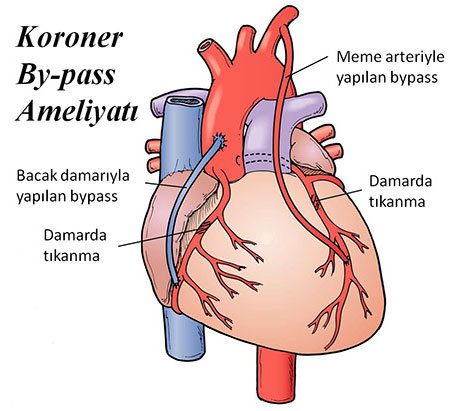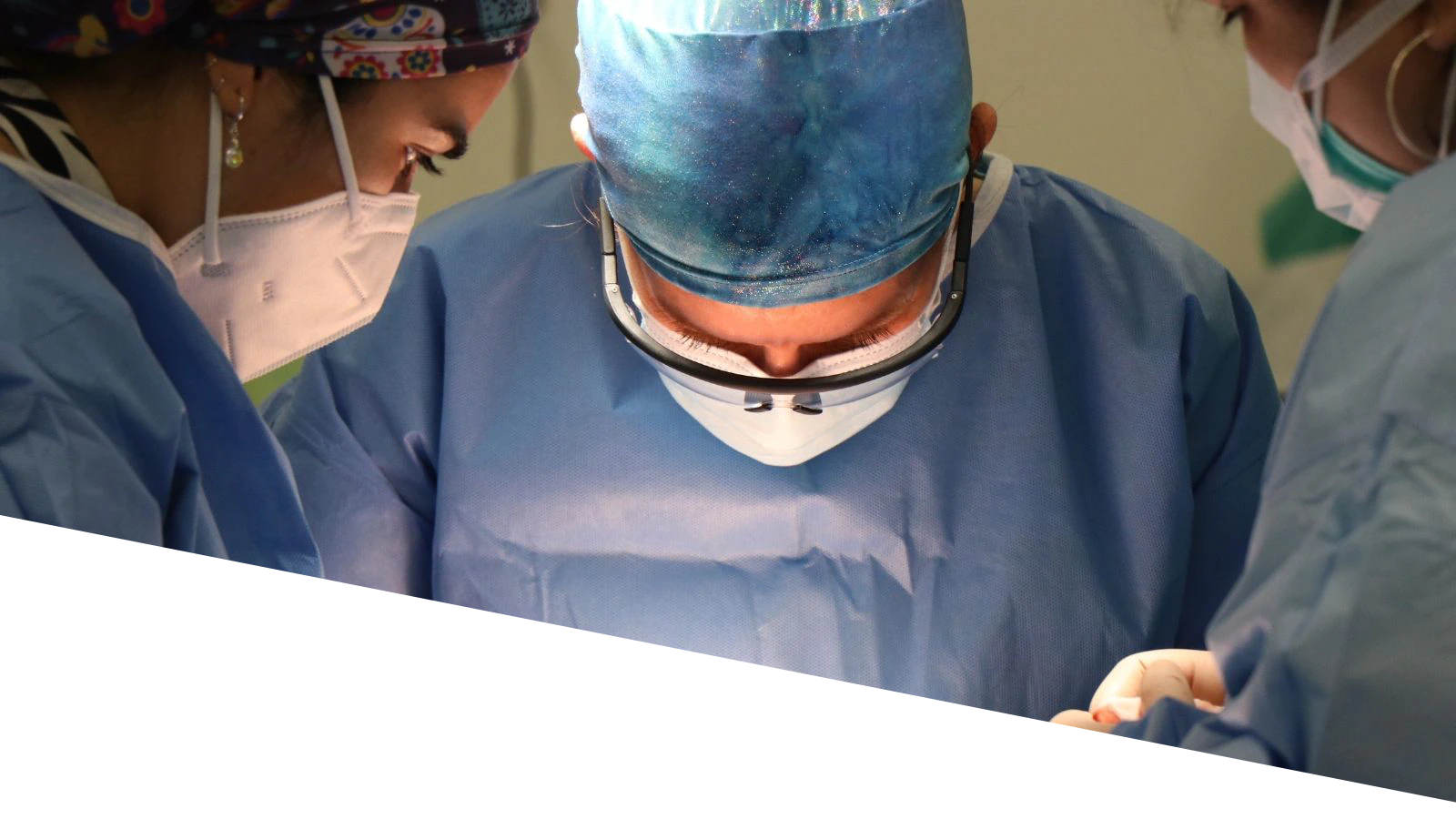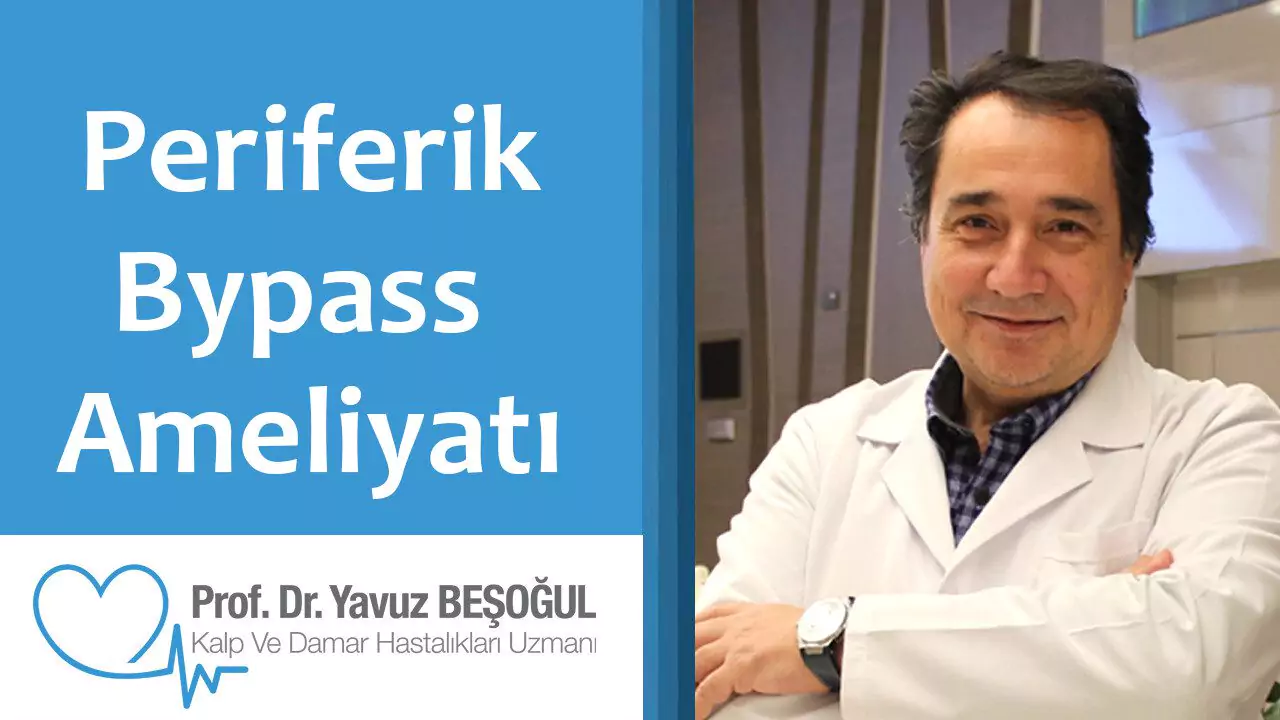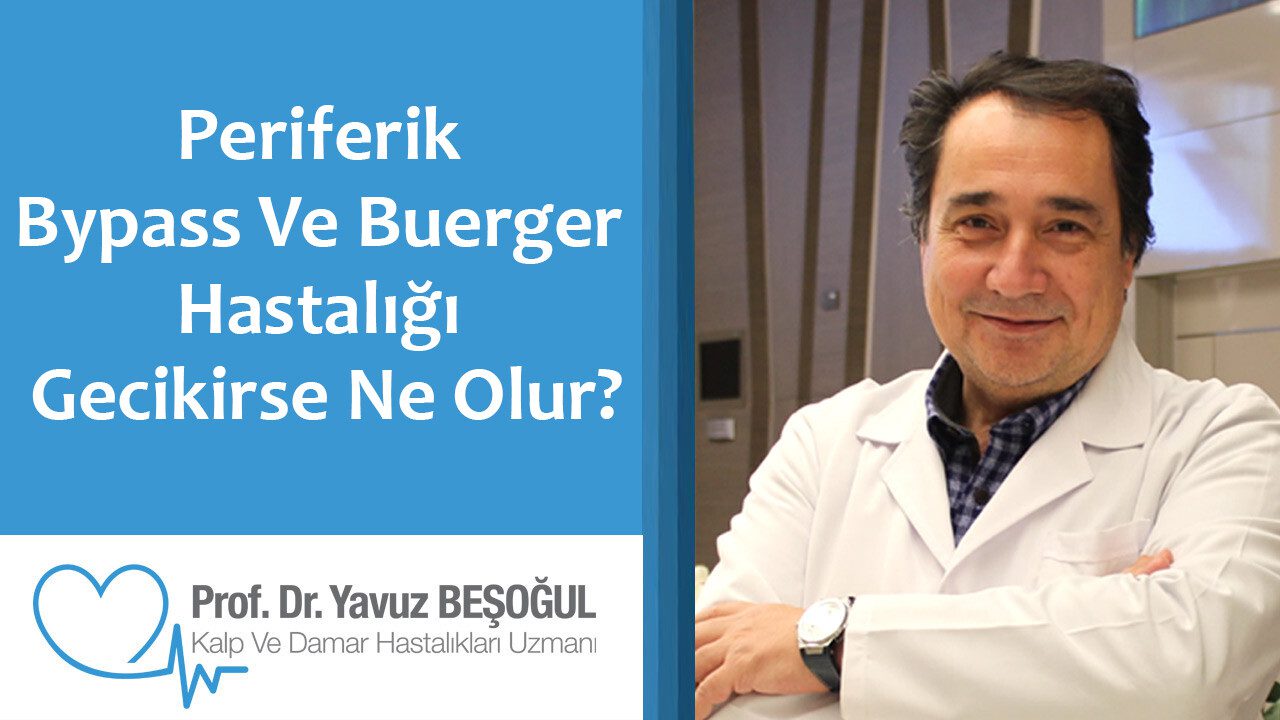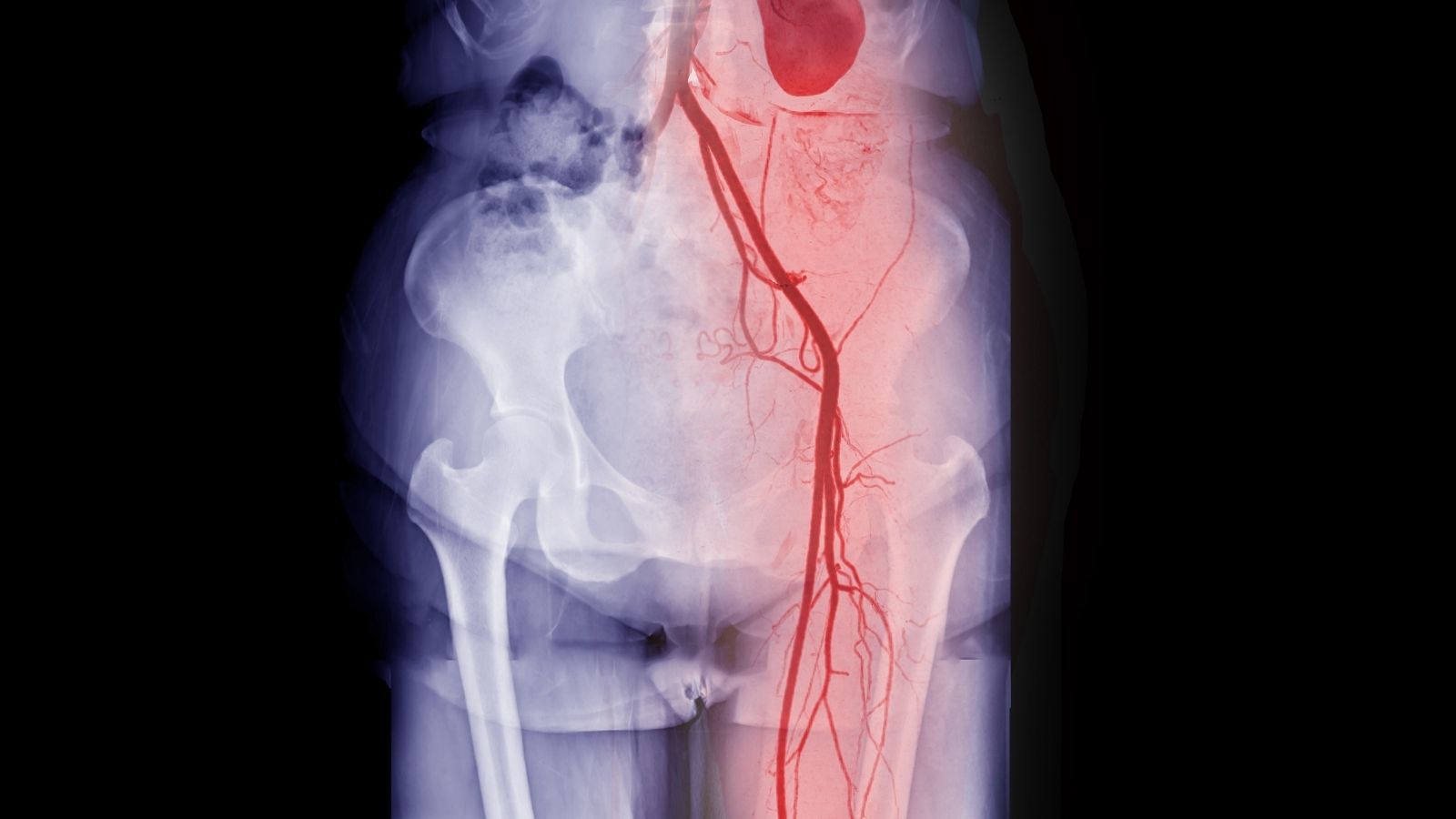Bypass ameliyatı, kalp cerrahisinde koroner arterlerdeki tıkanıklıkları aşmak için uygulanan temel yöntemlerden biridir. Bu operasyonda, kalp kasına giden kan akışı yeniden sağlanır ve hastanın yaşam kalitesi ile yaşam süresi artırılır. Genellikle açık kalp cerrahisiyle gerçekleştirilir.
Koroner arter bypass cerrahisinde, bacak toplardamarı veya göğüs içi atardamarı kullanılarak tıkalı damar bölgesinin etrafından yeni bir yol oluşturulur. Böylece kalp kası yeterli oksijen ve besin maddesi alır. Bu işlem özellikle çoklu damar hastalığında etkili bir tedavi seçeneğidir.
Kalp bypass cerrahisi sonrası iyileşme süreci, ilk aşamada yoğun bakım ve birkaç gün hastane takibini içerir. Sonrasında fiziksel aktivitenin kontrollü olarak artırılması, düzenli ilaç kullanımı ve beslenme alışkanlıklarının düzenlenmesi gerekir. Rehabilitasyon, uzun dönem başarı için kritik öneme sahiptir.
Kalp cerrahisinde kullanılan modern bypass teknikleri, minimal invaziv ve robotik yöntemleri de kapsamaktadır. Bu teknikler daha küçük kesiler, daha kısa iyileşme süresi ve daha düşük komplikasyon riski sunar. Cerrahi yöntemin seçimi, hastanın klinik durumu ve damar yapısına göre belirlenir.
| Bilmeniz Gerekenler | Bilgi |
| Tanım | Bypass ameliyatı, tıkalı veya daralmış olan koroner arterlerin yerine kan akışını sağlamak için vücudun başka bir bölgesinden alınan damarlarla yeni bir yol oluşturulması işlemidir. |
| Amaç | Kalp kasına yeterli oksijen ve besin ulaşımını sağlamak, göğüs ağrısını (angina) azaltmak ve kalp krizi riskini düşürmek. |
| Uygulama Şekli | Açık kalp ameliyatı ile genel anestezi altında gerçekleştirilir. Kalp-akciğer makinesi kullanılarak ya da kalp atarken (off-pump) yapılabilir. |
| Kullanılan Damarlar | Genellikle bacaklardan (vena saphena), göğüs duvarından (arteria mammaria interna) veya koldan (arteria radialis) alınan damarlar kullanılır. |
| Süre | Ameliyat genellikle 3 ila 6 saat sürer, kaç damar değiştirileceğine göre değişiklik gösterir. |
| Hastanede Kalış Süresi | Ortalama 5 ila 7 gün hastanede kalış gerekir; ilk gün yoğun bakımda geçirilir. |
| İyileşme Süreci | Evde iyileşme süresi genellikle 6-12 haftadır. Bu süre boyunca fiziksel aktivite kademeli olarak artırılır. |
| Riskler ve Komplikasyonlar | Enfeksiyon, kanama, pıhtı oluşumu, ritim bozuklukları, felç, kalp krizi, böbrek yetmezliği gibi riskler mevcuttur. |
| Başarı Oranı | Genel başarı oranı yüksektir, ancak hastanın yaşı, diğer hastalıkları ve yaşam tarzı başarıyı etkiler. |
| Ameliyat Sonrası Takip | Düzenli kardiyoloji kontrolleri, ilaç kullanımı, yaşam tarzı değişiklikleri (beslenme, egzersiz, sigarayı bırakma) gereklidir. |
| Alternatif Tedaviler | İlaç tedavisi, stent yerleştirme (anjiyoplasti), yaşam tarzı değişiklikleri. Ancak bazı durumlarda bypass en uygun seçenek olabilir. |
| Uygunluk Kriterleri | Ciddi derecede tıkanmış birden fazla koroner arter, başarısız stent uygulaması, diyabet gibi durumlar bypass için uygunluğu artırır. |
| Ameliyat Öncesi Hazırlık | Kan testleri, EKG, ekokardiyografi, anjiyografi yapılır. Aspirin ve bazı ilaçlar geçici olarak kesilebilir. |
| Ameliyat Sonrası Yaşam | Kalp sağlığını korumak için düzenli egzersiz, sağlıklı beslenme, ilaçlara uyum ve stresten kaçınma önemlidir. |
Bypass Nedir?
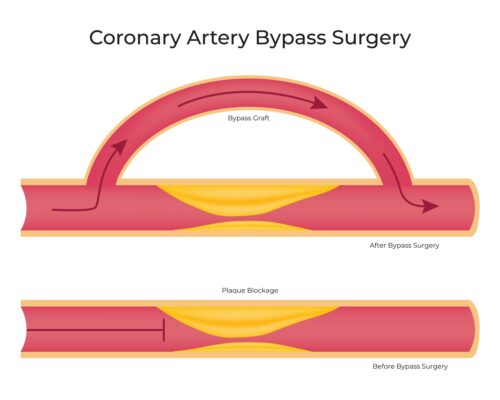
Bypass, tıpta damarlardaki tıkanıklığı ya da daralmayı aşmak amacıyla uygulanan cerrahi bir yöntemdir. En sık kalp damar cerrahisinde kullanılır ve tıkanan koroner damarın yerine sağlıklı bir damar grefti dikilerek kalp kasının kanlanması yeniden sağlanır. Bu yöntem kalp krizi riskini azaltır, göğüs ağrılarını hafifletir ve yaşam kalitesini artırır. Ayrıca bacak veya beyin damarlarındaki tıkanıklıklarda da uygulanabilir.
Bypass Ameliyatı Nedir?
Bypass ameliyatı, kalp kasına yeterli kan akışını sağlamak için tıkanmış veya daralmış koroner arterlerin yerine, vücudun başka bir bölgesinden alınan damarlarla yeni bir yol oluşturulması işlemidir. Bu sayede kalp dokusuna oksijen ve besin taşıyan kan akışı yeniden sağlanır, kalp krizi riski azaltılır ve hastanın yaşam kalitesi artırılır.
Bypass Ameliyatı Neden Yapılır?
Bypass ameliyatı, kalbi besleyen koroner damarların ciddi oranda daralması veya tıkanması sonucu kan akışını yeniden sağlamak için yapılır. Damar tıkanıklıkları kalp kasına yeterli oksijen gitmesini engellediğinde, göğüs ağrısı (anjina), nefes darlığı veya kalp krizi riski ortaya çıkar. Bu ameliyat, kalp kasının yeterli beslenmesini sağlayarak yaşam süresini uzatmayı, yaşam kalitesini artırmayı ve kalp krizi riskini azaltmayı amaçlar.
Kalp Bypass Çeşitleri Nelerdir?
Kalp bypass ameliyatı, uygulama şekline ve kullanılan tekniklere göre farklı türlerde gerçekleştirilebilir. Her hasta için en uygun yöntem, kalp hastalığının durumuna ve genel sağlık koşullarına göre belirlenir.
Başlıca kalp bypass çeşitleri şunlardır:
- Klasik (Açık Kalp) Bypass: Kalp-damar makinesi kullanılarak kalp durdurulur ve ameliyat gerçekleştirilir.
- Atan Kalpte Bypass (Off-Pump): Kalp çalışırken yapılan, kalp-damar makinesi kullanılmayan yöntemdir.
- Minimal İnvaziv Bypass: Göğüs kafesi açılmadan, küçük kesilerle yapılan daha az travmatik tekniktir.
- Robotik Bypass: Robot destekli cihazlarla, yüksek hassasiyetle yapılan cerrahidir.
- Tam Endoskopik Bypass: Kamera yardımıyla yapılan kapalı cerrahi yöntemidir.
Kalp Damarları Neden Tıkanır ve Bypass Ameliyatı Ne Demek?
Kalbimiz, vücudumuzun motoru gibidir ve durmaksızın çalışarak her dokuya kan pompalar. Bu yoğun tempoyu sürdürebilmesi için kendisinin de sürekli olarak temiz kana ihtiyacı vardır. Bu kanı ona getiren damarlara koroner arterler diyoruz. Ancak zamanla bu damarların iç duvarları, evimizdeki su borularının kireçlenip paslanmasına benzer bir süreçle yıpranmaya başlar. Tıptaki adı “ateroskleroz” yani damar sertliğidir.
Bu süreç damarın içini döşeyen hassas astar tabakasının (endotel) zarar görmesiyle tetiklenir. Bu hasara yol açan başlıca faktörler bulunmaktadır. Bazı önemli risk faktörleri şunlardır:
- Yüksek tansiyon (Hipertansiyon)
- Şeker hastalığı (Diyabet)
- Kan yağlarının yüksekliği (Yüksek kolesterol ve trigliserid)
- Sigara ve diğer tütün ürünlerinin kullanımı
- Genetik yatkınlık (Ailede erken yaşta kalp hastalığı öyküsü)
- Hareketsiz yaşam tarzı ve obezite
- Yoğun ve kronik stres
Bu risk faktörleri nedeniyle hasar gören damar duvarı, artık koruyucu özelliğini yitirir ve kan dolaşımındaki kötü kolesterol (LDL) gibi yağlı maddelerin damar duvarına sızıp birikmesine zemin hazırlar. Vücudumuz bunu bir tehdit olarak algılar ve bağışıklık sistemini devreye sokar. Bölgeye gelen savunma hücreleri, biriken yağları yutarak “köpük hücreleri” dediğimiz yapılara dönüşür. Bu hücrelerin birikmesiyle damar duvarında kabarıklıklar oluşur ve bu yapılara “plak” adını veririz. Plak zamanla büyüyerek damarın içini daraltır ve kanın geçişini zorlaştırır.
Bypass ameliyatı ne demek sorusunun cevabı da tam bu noktada yatar. Ameliyat, işte bu plakların neden olduğu daralmanın veya tam tıkanıklığın ötesine, kanın rahatça akabileceği alternatif bir “köprü” kurmak demektir. Bu darlıklar belli bir seviyeye ulaştığında vücudumuz bazı sinyaller vermeye başlar. Bu belirtiler genellikle efor sırasında ortaya çıkar, çünkü kalp hızlandığında daha fazla kana ihtiyaç duyar ama daralan damar bu ihtiyacı karşılayamaz. Kalp damarlarınızda bir sorun olabileceğine işaret eden bazı önemli belirtiler vardır:
- Kalp damarlarındaki bir sorunun olası belirtileri:
- Göğüste, genellikle iman tahtasının arkasında hissedilen baskı, sıkışma, ağırlık veya yanma hissi
- Eforla (yürüme, merdiven çıkma, yokuş çıkma) ortaya çıkan ve dinlenmekle geçen nefes darlığı
- Göğüsteki ağrının sol kola, çeneye, omuzlara veya sırta doğru yayılması
- Ani baş dönmesi veya göz kararması
- Normalin dışında, açıklanamayan aşırı yorgunluk ve halsizlik
Bu belirtilerden bir veya birkaçını yaşıyorsanız, bir kardiyoloji uzmanına başvurmanız hayati önem taşır.
Bypass Ameliyatına Nasıl Karar Verilir?
Bypass ameliyatı kararı, aceleyle veya tek bir kişinin görüşüyle alınan bir karar değildir. Bu hastanın tüm tıbbi verilerinin masaya yatırıldığı, farklı uzmanlık dallarından hekimlerin bir araya gelerek ortak akılla hareket ettiği bir süreçtir. Modern kardiyolojide bu iş birliğine “Kalp Takımı” (Heart Team) adı verilir ve bu yaklaşım hasta için en doğru tedavi yolunu bulmanın temelini oluşturur.
Kalp Takımı, genellikle şu uzmanlardan oluşur:
- Kalp ve Damar Cerrahı: Ameliyatı gerçekleştirecek olan hekimdir.
- Girişimsel Kardiyolog: Anjiyo ve stent gibi işlemleri yapan hekimdir.
- Kardiyolog: Hastanın tıbbi tedavisini ve takibini yürüten hekimdir.
- Bu ekip, hastanın durumunu bütüncül bir şekilde ele alır. Karar sürecinde kullanılan temel tanı yöntemleri bulunmaktadır.
- Karar sürecinde kullanılan bazı tanı yöntemleri şunlardır:
- Koroner Anjiyografi: Kalp damarlarının filminin çekilmesi işlemidir. Damarlardaki darlıkların yerini, sayısını ve ciddiyetini net bir şekilde gösteren altın standart yöntemdir.
- Ekokardiyografi (EKO): Kalp ultrasonudur. Kalbin kasılma gücünü, kapakçıkların durumunu ve genel yapısını değerlendirmek için kullanılır.
- Efor Testi: Hastanın bir koşu bandında yürütülerek kalbinin efor sırasındaki performansının ve EKG değişikliklerinin izlendiği testtir.
Kalp takımı, tüm bu verileri bir araya getirerek hastanın damar yapısının karmaşıklığını, kalbinin durumunu ve genel sağlık profilini değerlendirir. Ardından, ilaç tedavisi, stent (balon anjiyoplasti) ve bypass ameliyatı gibi tüm tedavi seçeneklerinin avantajlarını ve dezavantajlarını tartışır. Bu süreçte en önemli unsur, hastanın kendisidir. Hastanın yaşı, yaşam tarzı, beklentileri ve tedaviye dair tercihleri de karar mekanizmasının merkezinde yer alır. Hekimler, her bir seçeneğin potansiyel faydalarını, risklerini ve uzun dönem sonuçlarını hastaya anlayabileceği bir dilde anlatır ve nihai karar, hasta ile birlikte ortaklaşa verilir. Bu modern tıbbın “paylaşılmış karar verme” ilkesinin en güzel örneklerinden biridir.
Kimler Bypass Ameliyatı İçin Uygundur ve Bypass Ameliyatı Yaş Riskleri Nelerdir?
Bypass ameliyatı her kalp damarı tıkalı olan hastaya uygulanan bir yöntem değildir. Bilimsel kanıtlar ve uluslararası tedavi kılavuzları, bypass cerrahisinin bazı hasta gruplarında stent gibi diğer yöntemlere göre daha üstün ve kalıcı sonuçlar verdiğini göstermektedir. Bypass ameliyatının özellikle güçlü bir şekilde önerildiği durumlar vardır:
- Bypass ameliyatının güçlü bir şekilde önerildiği bazı durumlar şunlardır:
- Kalbin sol tarafını besleyen ana damar olan sol ana koroner arterde kritik bir darlık olması. Bu damar, kalbin büyük bir bölümünü beslediği için buradaki bir tıkanıklık hayati tehlike oluşturur.
- Kalbi besleyen üç ana damar sisteminde de yaygın ve ciddi darlıkların bulunması (üç damar hastalığı).
- Şeker hastalığı olan hastalarda birden fazla damarda tıkanıklık saptanması. Yapılan büyük çalışmalar bu hasta grubunda bypass ameliyatının stente göre hem yaşam süresini uzatma hem de kalp krizi riskini azaltma açısından daha başarılı olduğunu kanıtlamıştır.
- Geçirilmiş kalp krizleri veya başka nedenlerle kalp kasılma gücünün (pompa fonksiyonunun) belirgin şekilde azaldığı durumlarda, çoklu damar tıkanıklığı varsa bypass, kalbin yeniden güçlenmesine yardımcı olabilir ve yaşam süresini uzatabilir.
- Damar yapısının stent işlemine teknik olarak uygun olmadığı durumlar. Örneğin darlıkların çok uzun olması, aşırı kireçli bir yapıda olması veya damarların önemli dallanma noktalarında yer alması gibi karmaşık durumlarda bypass daha güvenli ve kalıcı bir çözüm sunar.
Peki, bypass ameliyatı yaş riskleri nelerdir? Bu hastalar ve yakınları tarafından en çok merak edilen konulardan biridir. Şunu net bir şekilde belirtmek gerekir: Yaş, tek başına bir ameliyat engeli değildir. Günümüzde 80’li, hatta 90’lı yaşlarındaki hastalara dahi bu ameliyat başarıyla yapılabilmektedir. Önemli olan hastanın biyolojik yaşı ve genel sağlık durumudur. Kalp takımı, risk değerlendirmesi yaparken sadece takvim yaşını değil aynı zamanda hastanın böbrek, akciğer gibi diğer organlarının fonksiyonlarını, beslenme durumunu, düşkün olup olmadığını (kırılganlık) ve eşlik eden diğer hastalıklarını da göz önünde bulundurur. Bu amaçla geliştirilmiş uluslararası risk puanlama sistemleri (STS skoru, EuroSCORE II gibi) kullanılır. Bu sistemler, hastaya özgü risk profilini objektif bir şekilde ortaya koyarak, ameliyatın potansiyel faydalarının olası risklerden daha fazla olup olmadığını belirlemeye yardımcı olur. Dolayısıyla ileri yaştaki bir hasta eğer genel sağlık durumu iyiyse düşük bir riskle ameliyat olabilirken, daha genç ama pek çok ek hastalığı olan bir hasta yüksek riskli kabul edilebilir. Karar her zaman kişiye özeldir.
Bypass Ameliyatı Nasıl Yapılır ?
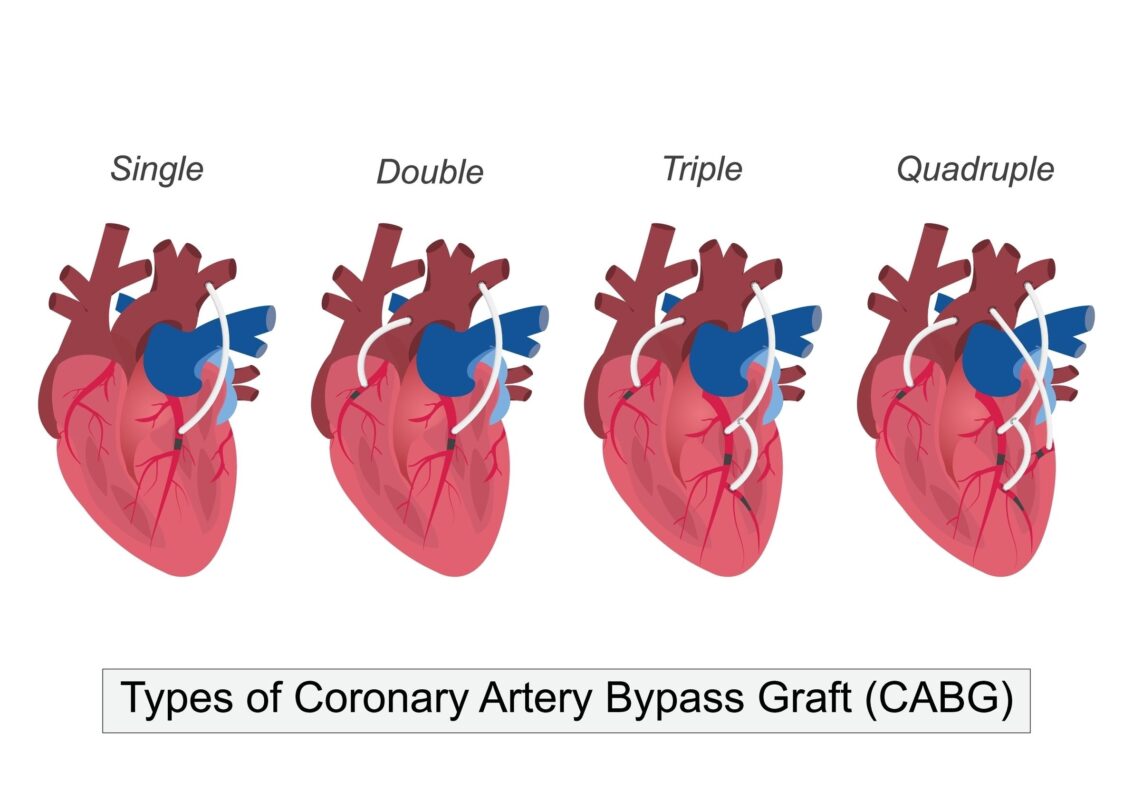
Bypass ameliyatının nasıl yapıldığı, hastalar için oldukça merak uyandıran bir konudur. “Bypass ameliyatı kaç saat sürer?” sorusunun yanıtı, bypass yapılacak damar sayısına ve uygulanacak cerrahi tekniğin türüne göre değişmekle birlikte operasyon genellikle 3 ila 6 saat arasında tamamlanır. Ameliyat, temelde tıkalı damarın ilerisine yeni bir kan yolu oluşturma prensibine dayanır. Bu yeni yol, yani “köprü”, hastanın kendi vücudundan alınan sağlıklı damarlar (greftler) kullanılarak inşa edilir.
- Köprüleme İçin Hangi Damarlar (Greftler) Kullanılır?
Ameliyatın uzun dönemdeki başarısı, bu köprüleme için kullanılan damarların kalitesine ve dayanıklılığına sıkı sıkıya bağlıdır. Cerrah, hastanın durumuna en uygun grefti seçer.
Kullanılan başlıca greft türleri:
Göğüs Atardamarı (İnternal Mamarian Arter – LIMA/RIMA): Özellikle sol göğüs atardamarı (LIMA), bypass cerrahisinin tartışmasız “altın standardı” olarak kabul edilir. Göğüs duvarının içinden geçtiği için yerinden tamamen sökülmeden, bir ucu doğal yerinde bırakılarak kalbin en önemli damarı olan LAD’ye bağlanır. Atardamar olduğu için yüksek basınca dayanıklıdır ve damar sertliğine karşı doğal bir dirence sahiptir. Bu nedenle on yıllar boyunca açık kalma olasılığı çok yüksektir (%90’ın üzerinde).
Kol Atardamarı (Radial Arter): Koldan alınan bu atardamar, ikinci en iyi greft seçeneği olarak görülür ve özellikle bacak toplardamarına göre çok daha dayanıklıdır.
Bacak Toplardamarı (Safen Ven): Bacaktan alınan bu damar, uzunluğu ve kolay erişilebilirliği nedeniyle en sık kullanılan grefttir. Ancak bir toplardamar olduğu için atardamar sisteminin yüksek basıncına maruz kaldığında zamanla yıpranma ve tıkanma riski daha yüksektir. Günümüzde “no-touch” gibi özel çıkarma teknikleri sayesinde bu damarların da dayanıklılığı artırılmaya çalışılmaktadır.
- Ameliyat Süreci ve Modern Teknikler
Klasik (Pompalı) Bypass Ameliyatı: Bu en yaygın uygulanan standart yöntemdir. Ameliyat, kalbin geçici olarak durdurulduğu ve bu sırada vücut dolaşımının bir “kalp-akciğer makinesi” tarafından sağlandığı bir ortamda yapılır. Bu makine, kalbin ve akciğerlerin görevini üstlenerek cerraha kansız ve hareketsiz bir alanda, son derece hassas dikişler atma imkânı tanır. Cerrah, hazırlanan greftlerin bir ucunu aort damarına (vücuda temiz kan taşıyan ana atardamar), diğer ucunu ise tıkalı olan koroner damarın ilerisindeki sağlıklı bölgeye dikerek köprülemeyi tamamlar.
Ancak tıp teknolojisindeki gelişmeler, bypass ameliyatının artık çok daha farklı ve daha az travmatik yöntemlerle de yapılabilmesine olanak tanımaktadır.
Günümüzde uygulanan bazı modern cerrahi teknikler şunlardır:
Çalışan Kalpte Bypass (Off-Pump): Bu teknikte kalp durdurulmaz ve kalp-akciğer makinesi kullanılmaz. Cerrah, özel sabitleyici aletler yardımıyla kalbin sadece üzerinde çalıştığı küçük bölgeyi hareketsiz hale getirirken, kalbin geri kalanı normal şekilde atmaya devam eder. Bu yöntem kalp-akciğer makinesinin olası yan etkilerinden kaçınmak için özellikle riskli hastalarda (ileri yaş, böbrek yetmezliği, kireçli aort damarı olanlar) tercih edilebilir.
Minimal İnvaziv Bypass (Küçük Kesiyle Ameliyat): Bu yaklaşımda göğüs kemiği (iman tahtası) tamamen kesilmez. Bunun yerine, kaburgaların arasından yapılan yaklaşık 5-8 cm’lik küçük bir kesiden girilerek ameliyat gerçekleştirilir. Bu yöntem daha az ağrı, daha hızlı iyileşme, daha az kanama riski ve daha iyi kozmetik sonuçlar sunar. Genellikle tek veya iki damar bypassı için uygundur.
Robotik Cerrahi ile Bypass (Robotik Bypass): Minimal invaziv cerrahinin en ileri teknolojisidir. Cerrah, bir konsoldan robotik kolları yöneterek, göğüs duvarına açılan sadece birkaç küçük delikten ameliyatın tamamını gerçekleştirir. Robotik sistem, üç boyutlu ve büyütülmüş görüntü altında, insan elinin ulaşamayacağı yerlerde çok daha hassas manevralar yapma imkânı sağlar. Bu yöntemle hastalar çok kısa sürede (bazen 2-3 günde) taburcu olup normal hayatlarına dönebilirler.
Hibrit Tedaviler: Bu strateji, cerrahi ve stent tedavisinin en iyi yönlerini bir araya getirir. Örneğin en kritik damar olan LAD’ye minimal invaziv veya robotik cerrahi ile bypass yapılırken, diğer damarlardaki daha basit darlıklara stent uygulanabilir. Bu hasta için “terzi usulü” bir tedavi planı oluşturmayı sağlar.
Bypass Ameliyatı Riskleri ve Olası Komplikasyonlar Nelerdir?
Her büyük cerrahi girişim gibi, koroner bypass ameliyatının da potansiyel riskleri vardır. Ancak günümüzün modern anestezi teknikleri, gelişmiş cerrahi yöntemler ve yoğun bakım imkanları sayesinde bu riskler önemli ölçüde azalmıştır. Deneyimli merkezlerde yapıldığında, bypass ameliyatı ölüm riski oldukça düşüktür ve genellikle %1-2 civarındadır. Bu oran hastanın yaşına, genel sağlık durumuna ve ameliyatın aciliyetine göre değişiklik gösterebilir.
Ameliyatın başarısı sadece hayatta kalmakla değil aynı zamanda komplikasyon olmadan iyileşmekle ölçülür. Bypass ameliyatı riskleri ve olası komplikasyonlar hakkında bilgi sahibi olmak, hem hasta hem de yakınları için önemlidir. Ameliyat sonrası dönemde karşılaşılabilecek bazı olası sorunlar vardır:
Ameliyat sonrası karşılaşılabilecek olası sorunlar şunlardır:
- Kanama: Ameliyat sonrası göğüs boşluğuna kan sızması olabilir. Genellikle yerleştirilen drenlerle bu kan dışarı alınır. Nadiren, aşırı kanama durumunda kanamayı durdurmak için hastanın tekrar ameliyata alınması gerekebilir.
- Enfeksiyon: Özellikle göğüs kemiğinin kesildiği klasik ameliyatlarda yara yerinde veya daha derinde enfeksiyon gelişebilir. Bu risk, sıkı sterilizasyon kuralları, koruyucu antibiyotik kullanımı ve özellikle şeker hastalarında kan şekeri kontrolü ile en aza indirilir.
- İnme (Felç): Ameliyatın en ciddi risklerinden biridir ve genellikle aort damarındaki kireçlenmiş plaklardan kopan parçacıkların beyne gitmesiyle oluşur. Günümüzde kullanılan “aorta dokunmadan” gibi özel teknikler ve ameliyat sırasında yapılan ultrason kontrolleri bu riski belirgin şekilde azaltmıştır.
- Ritim Bozuklukları: Ameliyat sonrası en sık görülen komplikasyon “atriyal fibrilasyon” adı verilen bir ritim bozukluğudur. Genellikle geçicidir ve ilaçlarla kolayca kontrol altına alınır.
- Böbrek Fonksiyonlarında Bozulma: Özellikle önceden böbrek rahatsızlığı olan hastalarda, ameliyat sonrası böbrek fonksiyonlarında geçici bir düşüş yaşanabilir. Çoğu zaman bu durum düzelir, ancak nadiren geçici diyaliz ihtiyacı doğabilir.
- Akciğer Sorunları: Ameliyat sonrası akciğerlerde bir miktar sıvı birikmesi veya küçük sönmeler (atelektazi) görülebilir. Bunu önlemek için hastaların erken dönemde ayağa kalkması ve özel solunum egzersizleri yapması teşvik edilir.
Bu risklerin her biri, Kalp Takımı tarafından ameliyat öncesinde detaylıca değerlendirilir ve her hasta için bireysel bir risk profili çıkarılır. Ameliyat kararı, potansiyel faydaların bu risklerden belirgin şekilde daha ağır bastığı durumlarda verilir.
Bypass Ameliyatı Kaç Saat Sürer?
Bypass ameliyatı süresi, yapılacak damar sayısına, cerrahi tekniğe ve hastanın genel sağlık durumuna göre değişir. Genellikle ameliyat öncesi hazırlık, anestezi uygulaması, cerrahi işlem ve yoğun bakım transferi dahil tüm süreç birkaç saat sürer.
Koroner bypass sırasında kalp-akciğer makinesi kullanılarak yapılan klasik yöntemde, damar greftlerinin hazırlanması ve kalp damarlarına dikilmesi adım adım gerçekleştirilir. Çalışan kalpte yapılan “off-pump” yöntemlerde süre farklılık gösterebilir.
Ameliyat süresini uzatan faktörler arasında damar yapısının zorluğu, ek cerrahi işlemler, kalp kapak onarımı veya değişimi gibi ek müdahaleler bulunur. Acil durumlarda veya önceden geçirilmiş kalp cerrahisi olan hastalarda süre daha uzun olabilir.
Ameliyat sonrası ilk saatler yoğun bakımda yakın izlem altında geçirilir. Bu süreç, hastanın hayati bulgularının stabilizasyonu, solunum desteğinin kesilmesi ve erken mobilizasyonun başlatılması açısından önem taşır.
Bypass Ameliyatı Ölüm Riski
Bypass ameliyatı, kalp damar tıkanıklıklarının tedavisinde uygulanan etkili bir yöntemdir ancak her cerrahi girişimde olduğu gibi belli riskler taşır. Ölüm riski hastanın yaşı, genel sağlık durumu, eşlik eden hastalıklar ve kalp damarlarındaki tıkanıklığın ciddiyetine göre değişir. Modern cerrahi teknikler ve yoğun bakım koşullarıyla bu oran oldukça düşük tutulmaktadır. Erken teşhis ve ameliyat sonrası bakım, riski en aza indiren önemli faktörlerdir.
Bypass Ameliyatı Sonrası İyileşme Süreci ve Yaşam Nasıl Şekillenir?
Bypass ameliyatı sonrası dönem, en az ameliyatın kendisi kadar kritik bir süreçtir ve hastanın yeni yaşamına attığı ilk adımları içerir. İyileşme süreci, uygulanan cerrahi tekniğe ve hastanın genel sağlık durumuna bağlı olarak kişiden kişiye farklılık gösterir.
Hastanede Geçen Süreç: Ameliyattan sonra hastalar genellikle 1-2 gün kalp ve damar cerrahisi yoğun bakım ünitesinde yakından takip edilir. Burada yaşamsal fonksiyonları sürekli izlenir. Durumu stabil hale gelince servisteki odasına alınır. Serviste kaldığı süre boyunca yavaş yavaş hareketlenmesi, yürümesi ve solunum egzersizleri yapması teşvik edilir. Bu erken mobilizasyon, akciğer sorunları ve pıhtı oluşumu gibi bypass ameliyatı sonrası riskleri azaltmak için çok önemlidir. Klasik bir ameliyat sonrası hastanede kalış süresi ortalama 5-7 gün iken, minimal invaziv veya robotik cerrahi sonrası bu süre 2-4 güne kadar inebilir.
Eve Dönüş ve Sonrası: Taburcu olmak, iyileşme sürecinin bittiği anlamına gelmez; tam tersine, hastanın kendi sorumluluğunu üstlendiği yeni bir dönemin başlangıcıdır. Bypass ameliyatı sonrası yapılması gerekenler, ameliyatın uzun vadedeki başarısını doğrudan etkiler. Ameliyat, tıkalı damarları tamir eder ancak damar sertliğine yol açan altta yatan hastalığı ortadan kaldırmaz. Bu nedenle yaşam tarzında yapılacak kalıcı değişiklikler hayati önem taşır.
Yeni yaşamınızda dikkat etmeniz gereken bazı temel unsurlar bulunmaktadır.
- İlaçlarınızı düzenli kullanmanız gerekir.
- Kan sulandırıcılar (Aspirin, vb.)
- Kolesterol düşürücü ilaçlar (Statinler)
- Tansiyon düzenleyiciler
- Gerekliyse kalp hızını veya ritmini kontrol eden ilaçlar
- Beslenme alışkanlıklarınızı gözden geçirmelisiniz.
- Tuz tüketimini belirgin şekilde azaltın.
- İşlenmiş, paketli gıdalardan ve şarküteri ürünlerinden uzak durun.
- Tereyağı, margarin gibi katı yağlar yerine zeytinyağını tercih edin.
- Sofranızda her gün bolca taze sebze, salata ve meyveye yer verin.
- Beyaz ekmek yerine tam buğday, çavdar gibi tam tahıllı ürünleri seçin.
- Haftada en az iki kez, özellikle somon gibi omega-3 zengini balıklar tüketin.
- Kırmızı et tüketimini sınırlandırıp tavuk, hindi gibi beyaz etlere veya bitkisel proteinlere yönelin.
- Fiziksel aktivite hayatınızın bir parçası olmalıdır.
- Doktorunuzun onayıyla, taburcu olduktan sonra kısa ve yavaş tempolu yürüyüşlere başlayın.
- Zamanla hem yürüme süresini hem de temposunu kademeli olarak artırın.
- İlk 6-8 hafta boyunca ağır kaldırmaktan, itme-çekme hareketlerinden ve ani dönmelerden kaçının (özellikle göğüs kemiği kesildiyse).
- Mutlaka kaçınmanız gerekenler de vardır:
- Sigara ve tüm tütün ürünleri: Sigara, hem kendi damarlarınıza hem de yeni takılan bypass damarlarına en büyük zararı veren faktördür. Ameliyatın başarısını riske atmamak için kesinlikle bırakılmalıdır.
- Aşırı alkol tüketimi
Bu yeni yaşam tarzı, sadece bypass damarlarınızı korumakla kalmaz, aynı zamanda genel sağlığınızı iyileştirerek size daha uzun ve kaliteli bir yaşamın kapılarını aralar.
Stent Mi Bypass Mı? Arasındaki Farklar Nelerdir?
Stent ve bypass, koroner arter hastalığında daralan ya da tıkanan damarları açmak için uygulanan iki farklı tedavi yöntemidir. Stent, anjiyografi sırasında damar içine yerleştirilen metal ağ yapısında küçük bir tüptür; minimal invaziv bir işlemdir, genellikle kısa sürede taburcu olunur. Bypass ise açık kalp ameliyatıdır; tıkalı damarlar, vücudun başka bölgelerinden alınan damarlarla geçilerek kalp kasına yeniden kan akışı sağlanır.
Stent, tek veya sınırlı sayıda darlıkta tercih edilirken; çoklu damar hastalığında, diyabetik hastalarda veya ana damar tutulumu varsa bypass önerilir. Hangi yöntemin uygun olacağı hastanın durumuna göre kardiyoloji ve kalp cerrahisi ekipleri tarafından birlikte değerlendirilir.
Temel farkı basit bir benzetmeyle açıklayabiliriz: Tıkalı bir otoyol düşünün. Stent işlemi, bu tıkalı yola girip tıkanıklığa neden olan enkazı bir tür metal kafes (stent) ile kenara iterek yolu yeniden trafiğe açmaya benzer. Bypass ise, bu tıkalı ve sorunlu yolu tamamen terk edip, başlangıç noktasından bitiş noktasına yepyeni, sorunsuz bir çevre yolu veya köprü inşa etmektir.
Hangisinin “daha iyi” olduğu sorusunun tek bir cevabı yoktur. Doğru tedavi, hastanın damar yapısına, darlıkların sayısına, yerine, karmaşıklığına ve hastanın genel sağlık durumuna (özellikle şeker hastalığı olup olmadığına) göre değişir. Karar, yine “Kalp Takımı” tarafından verilir.
Genel olarak hangi durumda hangi yöntemin daha avantajlı olabileceğine dair bazı eğilimler vardır:
- Bypass ameliyatı genellikle şu durumlarda stente göre daha üstün kabul edilir:
- Kalbi besleyen üç ana damarda da yaygın ve ciddi darlıkların olması (kompleks çoklu damar hastalığı).
- Kalbin en kritik damarı olan sol ana koroner arterde ciddi bir darlığın bulunması.
- Şeker hastalığı olan kişilerde birden fazla damarda tıkanıklık olması (uzun dönem sonuçları daha iyidir).
- Kalp kasılma fonksiyonlarının belirgin derecede azalmış olması.
- Stent işlemi ise genellikle şu durumlarda daha uygun bir seçenek olabilir:
- Tek damarda veya az sayıda damarda, yapısı stente uygun (kısa, kireçsiz) darlıkların olması.
- Hastanın genel sağlık durumunun bypass gibi büyük bir ameliyatı kaldıramayacak kadar riskli olması.
- Acil kalp krizi geçiren bir hastada tıkalı damarı en hızlı şekilde açmak gerektiğinde.
Sıkça Sorulan Sorular
Bypass ameliyatı hangi hastalarda uygulanır?
Bypass ameliyatı nasıl gerçekleştirilir?
Bypass ameliyatı sonrası iyileşme süreci nasıldır?
Bypass ameliyatında hangi damarlar kullanılır?
Bypass ameliyatı sonrası yaşam tarzı değişiklikleri neden önemlidir?
Bypass ameliyatı sonrası hangi komplikasyonlar gelişebilir?
Bypass ameliyatı sonrası hastalar ne zaman işe dönebilir?
Bypass ameliyatı sonrası cinsel yaşama dönüş nasıl olur?
Bypass ameliyatı hangi yaşlarda daha risklidir?
Bypass ameliyatı olan hastaların düzenli kontrolleri neden önemlidir?
Bypass ile açık kalp ameliyatı aynı şey mi?
Bypass ameliyatı olan kaç yıl yaşar?
Bypass ameliyatı zor mu?
Bypass olan kişi kaç günde iyileşir?
Bypass ameliyatı sonrası kalp krizi geçirilir mi?
Bypass ameliyatında kalp durdurulur mu?
Bypass ameliyatından sonra kemik ne zaman kaynar?
Bypass ameliyatında hasta uyutulur mu?
Bypass ameliyatında nereler kesilir?
İkinci kez bypass olur mu?
Bypass sonrası hasta ne zaman uyanır?
Bypass ameliyatı sonrası felç riski nedir?
Bypass olunmazsa ne olur?
Bypass ameliyatından sonra ağrılar ne kadar sürer?
Bypass ameliyatında kalp dışarı çıkarılır mı?
Bypass sonrası tekrar tıkanma olasılığı nedir?

Prof. Dr. Yavuz Beşoğul, 25 yılı aşkın deneyime sahip bir Kalp ve Damar Cerrahisi Uzmanıdır. Türkiye’de kapalı kalp ve atan kalpte bypass ameliyatlarının öncülerindendir. Bugüne kadar binlerce başarılı ameliyat gerçekleştirmiş, ulusal ve uluslararası dergilerde 100’den fazla bilimsel makale yayımlamıştır.


